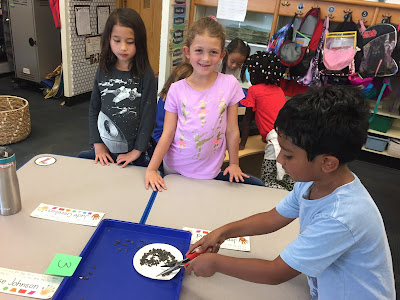In this unit, students learned about our place in the universe and time. They learned about the rotation and revolution of the earth, what makes day and night, and why the seasons change.
Students modeled how many hours there are in a day and night for each month of the year. The students could see that the number of hours of daylight changed according to the month/season.
Students made a bracelet with a bead representing earth to help them with the understanding of rotation and revolution.
Students also learned why the moon looks different at different times of the month, with the help of our cadet teacher, and represented the different moon phases.
This past quarter in Social Studies, we learned about neighborhoods and towns.
There was an emphasis on the members of a neighborhood, how the members improve the community, and the components of the neighborhood that are represented on a map.
Students created a neighborhood map in small groups. They named their town and street names. They included things in their community that they felt their town needed and wanted.
At the end of the unit, the students wrote to their local town leader or school leader suggesting a town or school improvement.
We look forward to more learning in science and social studies this school year!



















































